In this scene, we see a last gasp attack from the human riders against a far larger force of evil orcs. The horses the men ride reflect the heroic values of their riders whilst also encompassing the bestial nature of conflict. Jackson uses a wide shot, with the golden sun shining on the riders, to establish the majestic and heroic nature of the sacrifice that the men are about to make (Fig. 1). The horses wait in line, in unity with their riders. As the horse’s charge Jackson uses several close ups of the horses the demonstrate their strength (Fig. 2). The sound of horse’s hooves accompanies emotionally weighted music, the horses become synonymous with the emotions that accompany the deaths of the men. The fates of both the riders and the horses appear intertwined. As the men follow their King into battle with unwavering loyalty, the horses follow their riders. There is an obvious hierarchy between horse and man however this becomes less apparent as the two enter into battle, with the men relying on the horses’ strength. Jackson then uses another, wider shot, the establish the scale of the attack (Fig. 3). The sight of the horses becomes synonymous with the forces of good, a sight that is contrasted heavily with the ugly, evil orc army. The horses symbolise the strength and unity of the men when faced by a far greater, evil force.
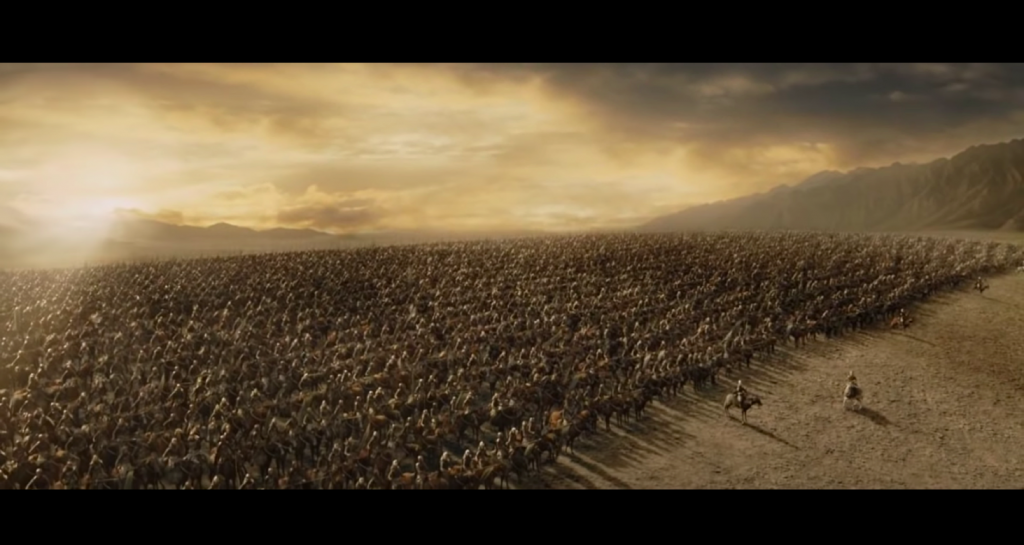
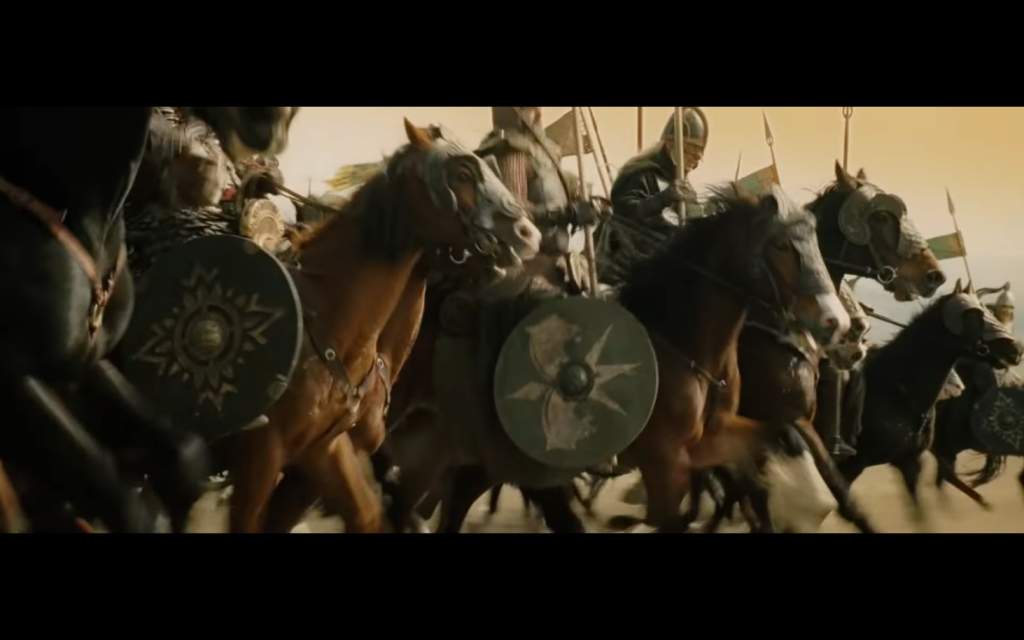
Whilst the horses are used to symbolically represent the heroism of their riders, they also demonstrate the bestial nature of man. The horses are shown trampling the orcs as they smash through their defences (Fig. 4). These graphic, brutal images exemplify man and beast’s unity in violence. There is no difference between the horses killing and the riders killing. In this way, Jackson portrays the brutal nature of battle as the violence appears instinctive alongside the horses’ role in the battle.
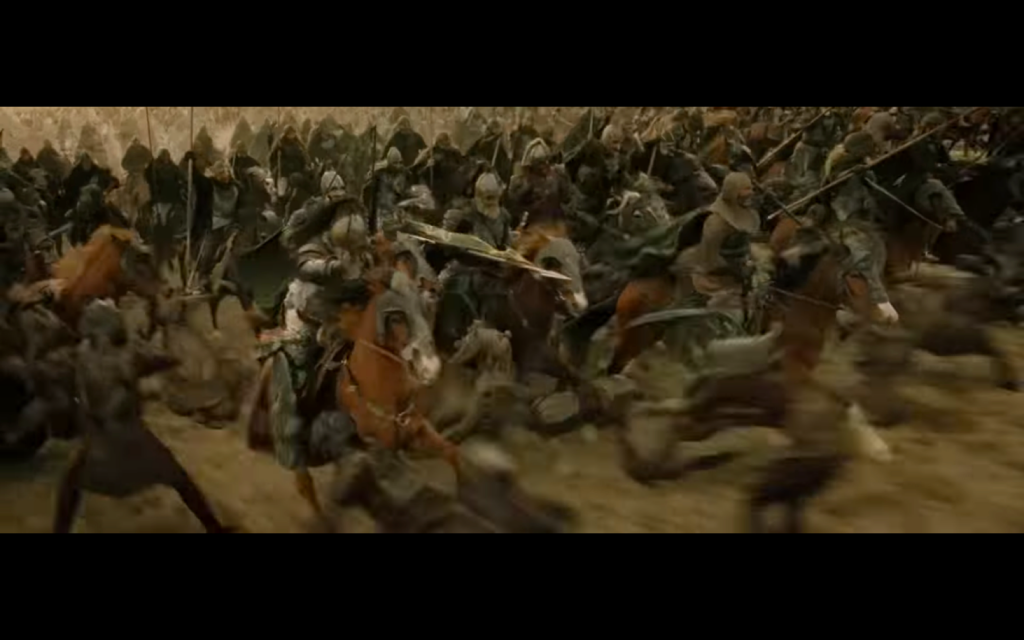
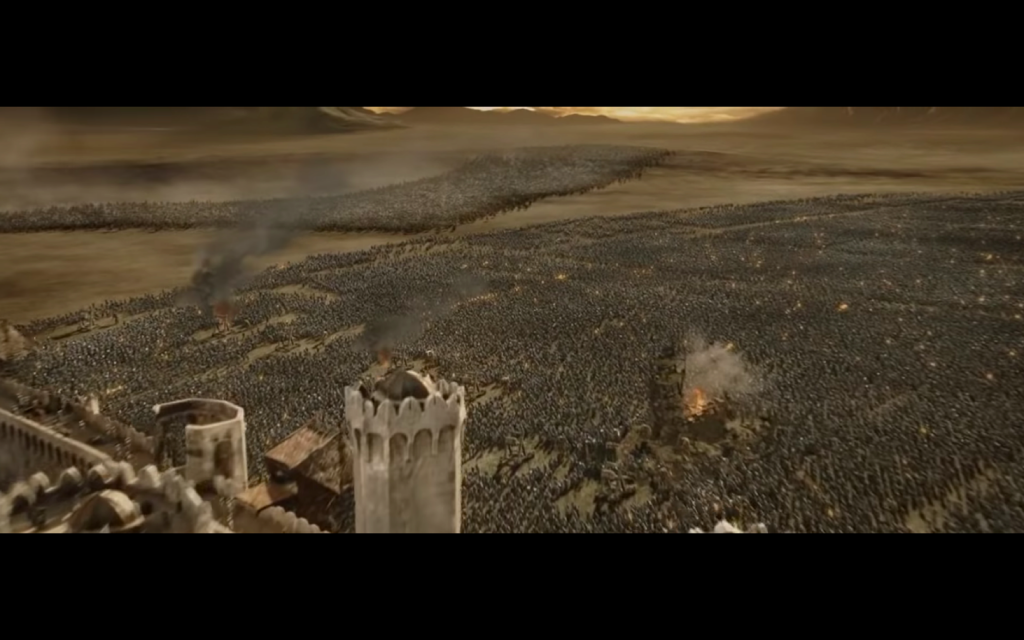
As the battle ends we see that the King has been killed and has fallen beneath his horse (Fig. 5). The imagery shows how all involved in the battle, even the King and his horse, suffer the same terrible fate at the hands of the violence of the battle. This can be viewed as a demonstration of the way in which all men are ultimately equal when it comes to battle, all suffer the same fate no matter what rank or nobility they hold, the King suffered the same fate as his horse. Alternatively, the King’s death in unison with his horse reflects the importance of the horses, the King’s horse has valiantly died protecting its King like so many of the men on that battlefield.
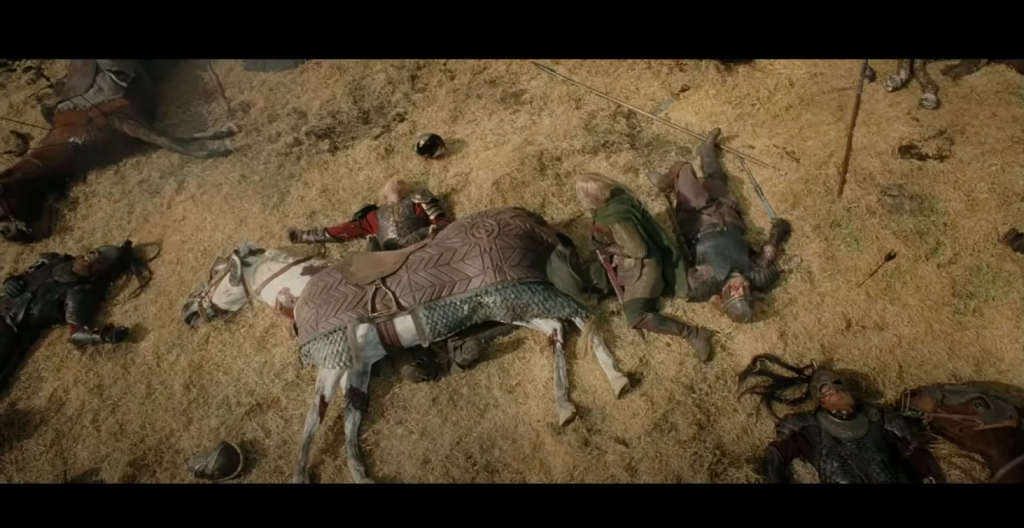
Jackson does not merely present the horses as a medium for the riders but as physical representation of the riders’ valour. Not only this, but the horses are intertwined with their riders in the bestial nature of battle.